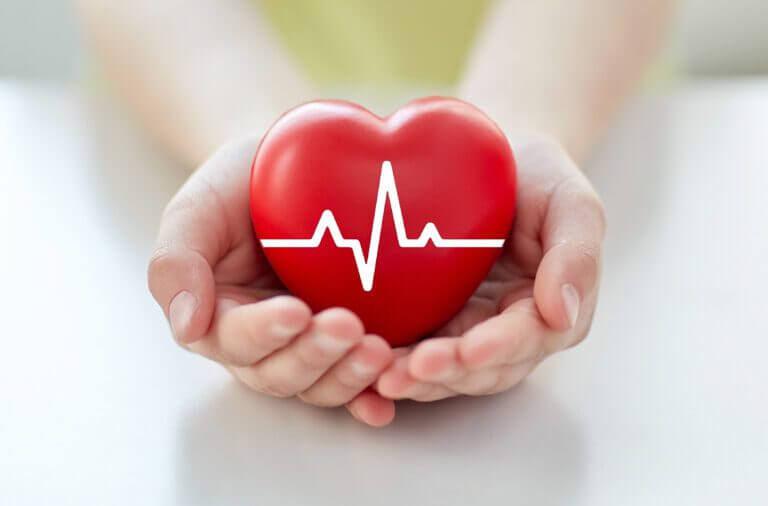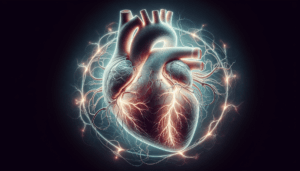AFib symptoms explained: Causes, Signs, and Treatment
Imagine living with unexpected episodes of a debilitating, rapid heart rate. This is the reality for millions of people living with atrial fibrillation (AFib), an irregular heart rhythm that can lead to serious complications, such as stroke or heart failure. But what are the common symptoms of this chaotic rhythm, and how can it be managed? In this blog post, I’ll discuss the fundamentals of AFib, explore atrial fibrillation symptoms in depth, risk factors, and treatments, and empower you with the knowledge you need to take control of your heart health.
Short Summary
-
Atrial Fibrillation is an irregular heart rhythm disorder caused by abnormal electrical impulses from the upper chambers of the heart.
-
Symptoms include palpitations, fatigue, dizziness and shortness of breath that can be improved with proper diagnosis and treatment.
-
Risk factors include age, high blood pressure, obesity etc., while treatments involve medications or procedures, as well as lifestyle changes to reduce the risk of complications.
Understanding Atrial Fibrillation
Atrial fibrillation is an irregular heart rhythm originating in the heart’s upper chambers, which can sometimes cause chest pain or palpitations. It is estimated that over 33 million people aged 55 and older have been diagnosed globally with atrial fibrillation. Recognizing AFib symptoms is crucial to prevent serious medical complications, such as stroke or heart failure.
Atrial fibrillation can increase the risk of stroke, heart failure, and other cardiovascular complications. If left untreated, it can result in a stroke and other severe medical complications.
To better understand AFib, let’s dive into how it occurs and its different types.
How Atrial Fibrillation Occurs
Atrial fibrillation occurs due to abnormal electrical impulses in the upper chambers of the heart, sometimes caused by structural heart problems or other medical conditions. This chaotic electrical activity disrupts the normal rhythm of the heart, leading to symptoms such as palpitations, fatigue, dizziness, and shortness of breath. The electrical chaos in the heart can be triggered by an abnormal heartbeat, although the cause of AFib may not always be identifiable.
The irregular rhythm of atrial fibrillation disrupts normal blood flow, which can increase the risk of blood clot formation. Blood clots can form in the heart chambers and have the potential to cause a stroke if they travel to the brain. Thus, understanding the causes of atrial fibrillation and addressing risk of stroke is essential for managing this condition and preventing severe complications.
Types of Atrial Fibrillation
There are three primary forms of atrial fibrillation: paroxysmal, persistent, and permanent (also called chronic or long standing persistent). Paroxysmal atrial fibrillation typically lasts for less than one week and usually resolves without any treatment. On the other hand, persistent atrial fibrillation lasts for more than one week and requires medical treatment or intervention to return to normal rhythm. Lastly, long-standing persistent AFib, lasting more than a year, is sometimes challenging to treat. Each type of atrial fibrillation has varying durations and symptoms, which can impact the treatment approach and management strategy.
Knowing the type of atrial fibrillation you or a loved one has is essential for determining the most effective treatment plan. Now that we’ve explored the types of atrial fibrillation, let’s discuss how to recognize its symptoms.

Recognizing Atrial Fibrillation Symptoms
Symptoms of atrial fibrillation can vary from person to person, with some experiencing no symptoms at all. Recognizing these symptoms is crucial for timely diagnosis and treatment, which can help prevent serious complications.
Every person diagnosed with atrial fibrillation experiences different symptoms depending on their pre-existing medical conditions and the severity of their condition. The most common symptoms of AFib include:
● Pain, pressure, or tightness in your chest
● Feeling dizzy, lightheaded, or faint
● Heart palpitations, or racing of your heart
● Sweating
● Feeling your heart skip a beat or become irregular
● Shortness of breath
● Fatigue and weakness
To better understand the symptoms of atrial fibrillation, let’s examine further examine these sometimes debilitating symptoms of AFib.
Your Complete Guide To AFib: The Essential Manual For Every Patient With Atrial Fibrillation
$15.95 (as of April 20, 2025 10:19 GMT -06:00 – More infoProduct prices and availability are accurate as of the date/time indicated and are subject to change. Any price and availability information displayed on [relevant Amazon Site(s), as applicable] at the time of purchase will apply to the purchase of this product.)Palpitations and Irregular Heartbeat
A common symptom of atrial fibrillation is palpitations or the sensation of an irregular heartbeat, which can be felt in the chest or neck. Palpitations can cause discomfort and anxiety, and may be accompanied by other symptoms such as fatigue, dizziness, and shortness of breath. It is essential to monitor and document these episodes, as well as frequency of episodes, and consult your healthcare provider accordingly.
Fatigue, Dizziness, and Shortness of Breath
Atrial fibrillation can cause fatigue, dizziness, and shortness of breath due to a reduction in oxygen supply to the body and brain. Shortness of breath in atrial fibrillation is sometimes caused by fluid buildup in the lungs, resulting in difficulty breathing. Dizziness and fainting are sometimes symptoms of atrial fibrillation, caused by insufficient blood supply to the brain, as well as low blood pressure.
Monitoring and recording episodes of dizziness or fainting, as well as any changes in symptoms, is essential for proper management of atrial fibrillation. Inform your doctor of these occurrences to ensure the most effective treatment plan is implemented.
Chest Pain
Some patients do not feel any racing or palpitations from atrial fibrillation, but can notice a dull or sharp chest pain associated with symptoms. In general, the risk factors for atrial fibrillation, such as high blood pressure or diabetes, are similar to the risk factors for coronary disease (blockages in the arteries of your heart). It is crucial for most patients with AFib to be screened for coronary artery disease as well.
Atrial Fibrillation Symptoms at Night
Did you know that is it common for many people to have symptoms of AFib during the night?
It is known that atrial fibrillation and sleep apnea (a condition that many people with AFib have where they experience prolonged periods without breathing during their sleep) are connected.
Many of my patients come to me and say, “I wake up in the middle of the night with my heart pounding in my chest!” And while this can be a very stressful experience, it is certainly possible for people living with AFib to have worse symptoms overnight.
If you have been experiencing overnight symptoms, be sure to talk to your cardiologist or electrophysiologist to discuss possible treatment options. Additionally, becoming educated on ways to reduce your symptoms when they appear through interventions such as taking deep mindful breaths and performing vagal maneuvers can be helpful if you wake up in the middle of an episode. In addition, treatment for common sleep disorders, such as sleep apnea, can also improve atrial fibrillation symptoms at night.
AFib Symptoms in the Elderly
As we age, the risk of developing medical conditions increases. This is also true of atrial fibrillation. In seniors with multiple health conditions, AFib symptoms can be more severe. Additionally, age increases the risk of developing serious complication from AFib. This is why it is essential to have regular medical check-ups, especially as people age. Having your primary care provider, cardiologist, or electrophysiologist keep an eye on your heart health is the best way to catch symptoms early and start treatments as early as possible.
Common AFib symptoms in the elderly include:
● Heart Racing or Palpitations
● Dizzynes or Fatigue
● Shortness of Breath
● Chest Pain
Atrial Fibrillation Risk Factors
Risk factors for atrial fibrillation include advanced age, high blood pressure, obesity, smoking, excessive alcohol consumption, and certain medical conditions, such as heart disease and diabetes. The risk of atrial fibrillation increases with age, while high blood pressure is also a significant risk factor for its development.
Let’s delve deeper into the lifestyle and environmental factors, as well as the medical conditions linked to atrial fibrillation.
Lifestyle and Environmental Factors
Physical inactivity, obesity, and excessive alcohol consumption have been linked to a heightened risk of developing atrial fibrillation. These lifestyle factors can increase the risk of atrial fibrillation by contributing to the development of health conditions such as hypertension, diabetes mellitus, and sleep apnea.
Adopting a healthy lifestyle, abstaining or reducing caffeine and alcohol, and engaging in regular aerobic exercise can assist in reducing the risk of atrial fibrillation. Weight loss has been shown to significantly improve AFib symptoms for many people with atrial fibrillation.
Medical Conditions Linked to Atrial Fibrillation
Certain medical conditions, such as heart disease, high blood pressure, and thyroid disorders, can increase the risk of atrial fibrillation. Atrial fibrillation is also associated with other conditions like coronary artery disease, heart valve disease, rheumatic heart disease, heart failure, hyperthyroidism, diabetes, metabolic syndrome, chronic kidney disease, lung disease, sleep apnea, and heart birth defects. Managing these conditions and monitoring their progression can help reduce the likelihood of developing atrial fibrillation or its complications.
Now that we’ve discussed the risk factors, let’s delve into the diagnosis and monitoring of atrial fibrillation.
Diagnosis and Monitoring of Atrial Fibrillation
Atrial fibrillation is diagnosed through a combination of medical history, physical examination, and diagnostic tests, such as an electrocardiogram (ECG). Early diagnosis and proper monitoring of atrial fibrillation are essential for effective treatment and the prevention of complications.
Let’s explore the diagnostic tests and home monitoring methods for atrial fibrillation.
Diagnostic Tests for Atrial Fibrillation
Due to the unpredictable nature of atrial fibrillation, it can be difficult to diagnose sometimes, especially in patients that have intermittent episodes that are few and far apart. In general, the main way AFib is diagnosed by your doctor is to have an electrical tracing of your heart during an episode of atrial fibrillation. Here are common methods used to diagnose atrial fibrillation:
-
Electrocardiogram. The electrocardiogram, or ECG or EKG, is the gold standard for determining if someone has atrial fibrillation because it looks at the heart from so many different angles and it’s been used for over 100 years. It commonly offered in a doctors office and gives a detailed snapshot of the electrical activity of the heart.
-
Holter Monitor. A Holter monitor is a continuous heart monitor worn for usually 24-72 hours. These monitors are continuously recording and can help identify intermittent episodes of atrial fibrillation.
-
Event monitor or Mobile Telemetry Monitors. These are extended duration monitors which can be worn from 1 week to up to 4 weeks at a time.
-
Implantable Cardiac Monitor or Loop Recorder. These are very small monitors, about the size of a paperclip, which are implanted underneath the skin. These device are long term monitors that last 3-4 years. They can be very useful diagnose symptoms that are months apart and for the long term management of atrial fibrillation.Learn more about implantable loop recorder monitors here.
Monitoring Atrial Fibrillation at Home
Patients can monitor their atrial fibrillation at home by regularly checking their pulse and being aware of any changes in symptoms. Devices such as KardiaMobile ECG, Holter monitors, and wearable devices like Fitbit or Apple Watch can be used to monitor atrial fibrillation in a home setting. Regular monitoring of pulse and any changes in symptoms helps detect alterations in the heart rhythm that may suggest atrial fibrillation.
It’s essential to communicate any changes in symptoms or concerns with your healthcare provider, as they can adjust your treatment plan accordingly.
Now that we’ve discussed diagnosis and monitoring, let’s explore the available treatments for atrial fibrillation.
Atrial Fibrillation Treatment Options
Treatment for atrial fibrillation may include medications, lifestyle changes, and non-pharmacological interventions, such as cardioversion or catheter ablation. The choice of treatment depends on the type of atrial fibrillation, the underlying cause, and the individual’s overall health and preferences.
Let’s examine the medications and non-pharmacological treatments available for atrial fibrillation.
Medications for Atrial Fibrillation
Medications for atrial fibrillation may include anti-arrhythmic drugs, beta-blockers, and anticoagulants to either help control heart rate, revert or maintain a normal rhythm, and reduce the risk of stroke. Beta-blockers, calcium channel blockers, amiodarone, sotalol, dofetilide, and dronedarone are medications commonly employed to treat atrial fibrillation symptoms. These medications work by blocking certain electrical signals in the heart or slowing down the heart rate.
Anticoagulants can help reduce the risk of stroke in atrial fibrillation. Eliquis, Xarelto, Pradaxa, Savaysa, and Warfarin are common type of anticoagulant prescribed for this purpose. Proper adherence to the prescribed medications and regular check-ups with the healthcare provider are crucial for effective management of atrial fibrillation and the prevention of complications.
Non-pharmacological Treatments
Non-pharmacological treatments for atrial fibrillation include cardioversion, catheter ablation, or the implantation of a pacemaker to help restore and maintain a normal heart rhythm. Cardioversion is a procedure that utilizes electrical shocks to re-establish a regular heart rhythm. Catheter ablation is a medical procedure that disrupts irregular electrical pathways in the heart by guiding catheters through a vein into the heart and ablating the tissue causing the abnormal rhythm.
In some cases, a pacemaker implantation may be necessary to regulate and maintain a normal heart rhythm. The choice of non-pharmacological treatment depends on the individual’s specific condition, overall health, and the underlying cause of atrial fibrillation. It’s essential to discuss these treatment options with your healthcare provider to determine the most appropriate approach for your situation.
Preventing Atrial Fibrillation and Complications
Prevention of atrial fibrillation involves reducing risk factors, such as maintaining a healthy lifestyle and managing underlying medical conditions, as well as recognizing and managing potential complications. By taking proactive steps to minimize risk factors and address any existing health conditions, individuals can reduce their likelihood of developing atrial fibrillation or its complications.
Let’s explore how to reduce these risk factors and manage potential complications effectively.
Reducing Risk Factors
Reducing risk factors for atrial fibrillation includes maintaining a healthy weight, engaging in regular physical activity, limiting alcohol consumption, and managing stress. Adopting a healthy lifestyle, moderating caffeine and alcohol consumption, and engaging in regular aerobic exercise can assist in reducing the risk of atrial fibrillation.
It’s also crucial to address and manage any existing medical conditions, such as hypertension, diabetes, and obesity, as they can increase the risk of atrial fibrillation and its complications. Regular check-ups with healthcare providers and adherence to prescribed medications can help manage these conditions effectively.
Summary
Atrial fibrillation is a complex and potentially life-threatening condition that affects millions of people worldwide. By understanding its causes, symptoms, risk factors, and available treatments, individuals can take control of their heart health and reduce the risk of complications. Through early diagnosis, proper management, and lifestyle modifications, atrial fibrillation can be effectively treated, allowing individuals to live healthier, more fulfilling lives.
Frequently Asked Questions
What are the warning signs of AFib?
Frequent symptoms of AFib include shortness of breath, chest pain, lightheadedness, fatigue and an irregular heartbeat.
If you experience any of these signs, seek medical attention urgently.
What are the first signs AFib is developing?
The first signs of AFib developing are heart palpitations, chest pain or tightness, confusion, dizziness and a quivering or fluttering heartbeat. These symptoms should be taken seriously and if experienced, one should visit their doctor.
How can I check for AFib at home?
To check for AFib at home, feel for a pulse on your wrist or check under your jaw for an irregular beat over 60 seconds. If the pulse is steady and regular, then you’re probably not experiencing AFib. There are several at home devices to check for atrial fibrillation including KardiaMobile, Apple Watch or Fitbit.
What is Atrial Fibrillation?
Atrial fibrillation is an irregular heart rhythm originating in the heart’s upper chambers, which can lead to symptoms such as chest pain, palpitations, or shortness of breath.
These symptoms can be uncomfortable and can lead to further complications if left untreated. Treatment options for atrial fibrillation include medications, lifestyle changes, and in some cases, surgery.
What are the risk factors for Atrial Fibrillation?
Atrial fibrillation risk factors include age, high blood pressure, obesity, smoking, alcohol consumption, and underlying medical conditions such as heart disease.
The Best Atrial Fibrillation Book
Your Complete Guide To AFib: The Essential Manual For Every Patient With Atrial Fibrillation
$15.95 (as of April 20, 2025 10:19 GMT -06:00 - More infoProduct prices and availability are accurate as of the date/time indicated and are subject to change. Any price and availability information displayed on [relevant Amazon Site(s), as applicable] at the time of purchase will apply to the purchase of this product.) The A to Z guide on everything you need to know about atrial fibrillation. Written by AFib expert Dr. Percy Morales MD. Over 120 pages of essential information on medications, procedures, and lifestyles modifications for AFib. Easy to read for every patient.
Shop AFib Products on Amazon
KardiaMobile 6-Lead Personal EKG Monitor – Six Views of The Heart – Detects AFib and Irregular Arrhythmias – Instant Results in 30 Seconds – Works with Most Smartphones - FSA/HSA Eligible
13% Off
KardiaMobile 1-Lead Personal EKG Monitor – Record EKGs at Home – Detects AFib and Irregular Arrhythmias – Instant Results in 30 Seconds – Easy to Use – Works with Most Smartphones - FSA/HSA Eligible
$79.00 (as of April 20, 2025 11:12 GMT -06:00 - More infoProduct prices and availability are accurate as of the date/time indicated and are subject to change. Any price and availability information displayed on [relevant Amazon Site(s), as applicable] at the time of purchase will apply to the purchase of this product.)
Apple Watch Series 9 [GPS 41mm] Smartwatch with Storm Blue Aluminum Case with Silver Sport Band M/L. Fitness Tracker, Blood Oxygen & ECG Apps, Always-On Retina Display
(as of April 20, 2025 01:53 GMT -06:00 - More infoProduct prices and availability are accurate as of the date/time indicated and are subject to change. Any price and availability information displayed on [relevant Amazon Site(s), as applicable] at the time of purchase will apply to the purchase of this product.)
Fitbit Sense 2 Advanced Health and Fitness Smartwatch with Tools to Manage Stress and Sleep, ECG App, SpO2, 24/7 Heart Rate and GPS, Shadow Grey/Graphite, One Size (S & L Bands Included)

OMRON 2-in-1 Upper Arm Blood Pressure Monitor & 1-Lead EKG Monitor - Clinically Validated Blood Pressure Arm Cuff & Machine - Use OMRON Connect App
32% Off
EMAY Portable ECG Monitor | Record ECG and Heart Rate Anytime Anywhere | Stand-Alone Device with LCD Screen and Storage | No Subscription Required
$109.00 (as of April 20, 2025 02:45 GMT -06:00 - More infoProduct prices and availability are accurate as of the date/time indicated and are subject to change. Any price and availability information displayed on [relevant Amazon Site(s), as applicable] at the time of purchase will apply to the purchase of this product.)
Samsung Galaxy Watch 6 44mm Bluetooth Smartwatch, Fitness Tracker, Personalized HR Zones, Advanced Sleep Coaching, Heart Monitor, BIA Sensor, Health Wellness Insights, Big Screen, US Version, Graphite
33% Off
Natural Rhythm Triple Calm Magnesium 150 mg - 120 Capsules – Magnesium Complex Compound Supplement with Magnesium Glycinate, Malate, and Taurate. Calming Blend for Promoting Rest and Relaxation.
$20.77 ($0.17 / Count) (as of April 20, 2025 11:12 GMT -06:00 - More infoProduct prices and availability are accurate as of the date/time indicated and are subject to change. Any price and availability information displayed on [relevant Amazon Site(s), as applicable] at the time of purchase will apply to the purchase of this product.)
Pure Encapsulations Magnesium (Glycinate) - Supplement to Support Stress Relief, Sleep, Heart Health, Nerves, Muscles, and Metabolism* - with Magnesium Glycinate - 180 Capsules
$44.60 ($0.25 / Count) (as of April 20, 2025 02:45 GMT -06:00 - More infoProduct prices and availability are accurate as of the date/time indicated and are subject to change. Any price and availability information displayed on [relevant Amazon Site(s), as applicable] at the time of purchase will apply to the purchase of this product.)
















![Apple Watch Series 9 [GPS 41mm] Smartwatch with Storm Blue Aluminum Case with Silver Sport Band M/L. Fitness Tracker, Blood Oxygen & ECG Apps, Always-On Retina Display #1](https://m.media-amazon.com/images/I/311xwtp4mFL._SL100_.jpg)
![Apple Watch Series 9 [GPS 41mm] Smartwatch with Storm Blue Aluminum Case with Silver Sport Band M/L. Fitness Tracker, Blood Oxygen & ECG Apps, Always-On Retina Display #2](https://m.media-amazon.com/images/I/41j+8AaUGsL._SL100_.jpg)
![Apple Watch Series 9 [GPS 41mm] Smartwatch with Storm Blue Aluminum Case with Silver Sport Band M/L. Fitness Tracker, Blood Oxygen & ECG Apps, Always-On Retina Display #3](https://m.media-amazon.com/images/I/41jIyxZitnL._SL100_.jpg)
![Apple Watch Series 9 [GPS 41mm] Smartwatch with Storm Blue Aluminum Case with Silver Sport Band M/L. Fitness Tracker, Blood Oxygen & ECG Apps, Always-On Retina Display #4](https://m.media-amazon.com/images/I/41IpNJERjCL._SL100_.jpg)
![Apple Watch Series 9 [GPS 41mm] Smartwatch with Storm Blue Aluminum Case with Silver Sport Band M/L. Fitness Tracker, Blood Oxygen & ECG Apps, Always-On Retina Display #5](https://m.media-amazon.com/images/I/31o17yhfYpL._SL100_.jpg)











































